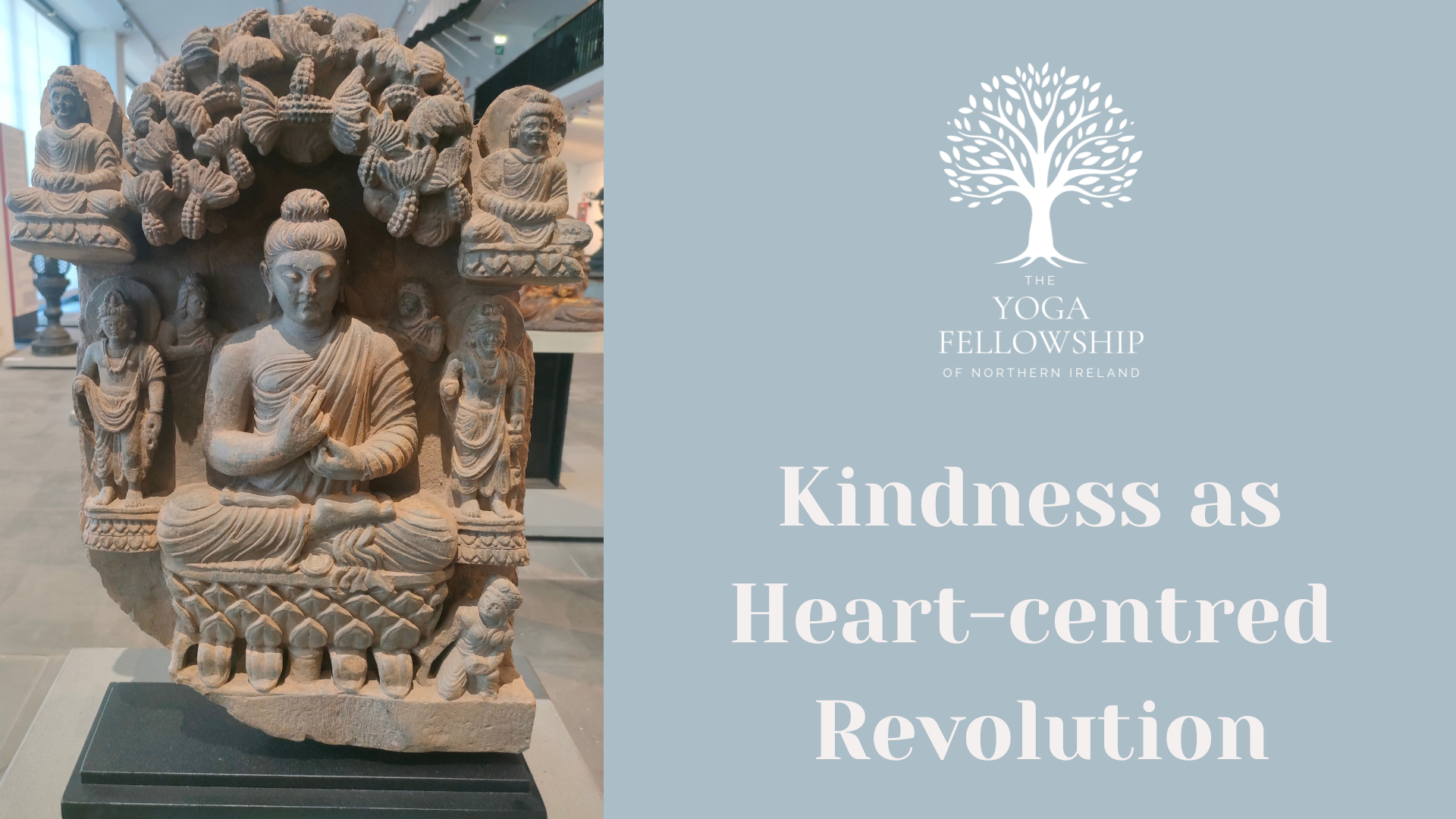Kindness as Heart-Centred Revolution
Honouring World Kindness Day through Yogic Wisdom
“Only with the heart can you touch the sky.”
Rumi
On 13th November we are called to observe World Kindness Day — a celebration of the simple yet transformative practice of being kind. In a world often driven by urgency and division, kindness can get understated, fragile, trampled underfoot. In a world quick to judge and cancel, we can too quickly miss that it is better to be kind than to be right. Yet, in the yogic tradition, kindness is not weakness, irrelevance or passing sentiment; it is a profound sādhanā — a spiritual practice capable of shifting the texture of our inner and outer worlds.
Ahimsa: The Foundation of Gentle Strength
At the heart of the yamas (ethical precepts to guide our lives) in Patañjali’s Yoga Sūtras lies Ahimsa (non-violence). In Sutra II.35, it is said:
“Ahimsa-pratiṣṭhāyām tat-sannidhau vaira-tyāgaḥ”
When non-violence is firmly established, hostility ceases in its presence.
Kindness, then, is in the tradition of being more than the absence of harm; it is an active presence that disarms and arrests energy that could otherwise damage. When we embody ahimsa, we do not just refrain from unkindness—we create an atmosphere where others feel safe to soften, too. It is a wisdom teaching of going the extra mile. Kindness becomes a quiet revolution that alters the energetic field around us.
Mantra: Invoking the Heart’s Language
Mantras give voice to our deepest intentions and still the mind for the right actions to arise more freely, clearly and seamlessly. A key kindness mantra, often used to awaken compassion, is:
“Lokāḥ Samastāḥ Sukhino Bhavantu”
May all beings everywhere be happy and free.
The vibration behind the words contains the intentionality - may my thoughts, words, and actions contribute to and amplify that happiness and freedom.
Chanting this mantra gently anchors the mind in a universal field of goodwill, dissolving the boundaries between self and other. It is not wishful thinking; it is a deliberate vibration of benevolence sent into the world.
Metta Meditation – Loving Kindness meditation
Very much in the same vibration, the benefits of loving kindness meditation are well documented – and experienced each time this practice is engaged. May I/you/we be well. May I/you/we be happy. May I/you/we be at peace. This kindness isn’t just addressed to those we love – but more powerful still when we practice sending the reverberation of loving kindness to those we find most difficult and distressing. They are often among our greatest teachers - as here we will find our own shadow.
Mudra: Gesture of Inner Offering
The simple act of bringing Anjali Mudra — palms together at the heart — is more than a greeting. It is a symbol of reverence and unity, a physical expression namaste - “I see and honour the light within you that is also the light within me.” Practising Anjali Mudra with mindful breath, even briefly, recalibrates our nervous system, turning inward aggression into inner steadiness and opening the heart to kindness.
Kindness as Tapas and Saucha
Within the niyamas (personal observances), kindness also finds expression through Tapas (dedicated effort) and Saucha(purity). Being kind is not always effortless; sometimes, it requires tapas — the discipline to respond with grace even when our ego resists. And Saucha reminds us to keep our inner landscape uncluttered by resentment, cynicism, or judgment, so that kindness can flow freely.
A Practice Beyond the Mat
While asana trains the body, kindness trains the heart. Each moment offers a choice: to retract into separation or to extend presence. A smile offered to a stranger, a patient breath in the face of irritation, a willingness to listen without agenda,— these are as much yoga as any physical shape. Asana practiced with kindness will also amplify our ability to be kind beyond the mat.
As World Kindness Day invites global reflection, yoga invites daily embodiment. Through sutra, mantra, mudra, and mindful living, kindness moves from concept to way of being. It is, ultimately, the practice through which yoga’s deepest promise — union — is realised.
Mary O’Rawe

